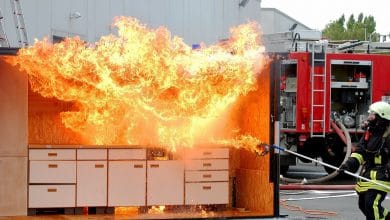
The basis of every 3D-printed component is the so-called 3D model.
This chapter deals with the different challenges around the 3D model creation.
It’s all about the 3D data flow, what needs to be considered and what options there are for creating a printable file on the computer.
Contents
Basics of 3D model creation
Before you can hold a 3D printed component in your hands, you need it several work steps. In addition to the individual steps on the 3D printer itself, data preparation also requires several measures in order to get exactly the desired component from the printer.
The following illustration makes it clear what the data flow looks like for 3D models and which 3D data is required in the respective working levels.
1.Create print data
The basis of every 3D print is a digital data model.
This can be based on a CAD database or by measuring a large number of points.
With these two methods, the digital 3D model is created, which contains all the geometric parameters of the component.
So what are CAD data and point clouds?
- CAD (Computer aided design)
CAD refers to the computer-aided generation of design data. The constructive tasks are supported by electronic data processing in order to produce objects for buildings, machines, vehicles and airplanes or even clothing. Two- and three-dimensional models can be generated in CAD.
There are surface models, volume models or parametric models.
Point clouds are created during the 3D scan.
The model is scanned three-dimensionally. Many small points are measured. In addition to the coordinates (x,y,z), these points can also contain color information.
A reverse engineering then takes place, which means that a line is always created between two points. Individual triangles are then generated from the lines created, so that the entire surface of the object is covered with a triangle network, the so-called triangular situation.
How do you get the 3D models and what are the options?
For a better overview, the individual areas are each explained in more detail in a separate sub-chapter. For more detailed information about the respective topic, use the link provided.
1. Use existing 3D models – content platforms
The growing interest in 3D printing has led to 3D models being collected and exchanged on internet platforms with increasing frequency. The designers present their models for download – free of charge or for a small fee. These digital marketplaces have proliferated due to the growing popularity of 3D printing and are good for finding a suitable quote or 3D model swap site.
Most of them are even free. With a bit of luck you will find an original idea that can be adapted and perfected to your own needs. It is therefore not absolutely necessary to design your own digital model as a basis for 3D printing.
A lot of effort can be saved with detailed precision work in the CAD program or by using a 3D scanner.
2. Construct 3D models yourself
If you don’t want to search for the right print file for a long time on various platforms, you have to deal intensively with 3D modelling.
There are also different types of programs that have advantages and disadvantages depending on the application. The selection of the construction program is still dependent on one’s own skills.
A highly complex program in which most functions cannot be used increases the level of frustration. Here less is more.
Extensive information about “designing 3D models yourself” can be found on this page, as well as a list of CAD programs and other software tools.
3.3D scan
The third way to get a 3D model is 3D scanning.
With 3D scanning, existing objects/models are digitized using different scanning methods.
These are measured in height, width and length. Depending on the scanning process, color information can also be processed.
This possibility of creating 3D models has developed rapidly in recent years, as the quality of 3D scans has improved significantly.
In the meantime, this method is not only used for model creation, but also for quality assurance in industrial companies.
In this way, produced components (regardless of whether they are conventional or using 3D printing) can be compared with the digital model.
Each variant has its pitfalls, but experience has shown that they are 3D scan and the own construction most educational.
The 3D printer still cannot do anything with the 3D model alone. A 3D printer only understands the programming language.
So-called slicer programs are used to establish the connection between the 3D model and the printer.
The preparation for printing takes place in this slicer. The components are positioned in a virtual construction space of your 3D printer. The parameters for 3D printing are also set here.
Export data formats for slicer: .stl , .3mf, .vrml, .obj
2.Slicing – preparing 3D models for 3D printing
Slicers are required for all 3D printing processes.
Important information such as printing temperature, filling quantity, placement of the components and their alignment or arrangement are specified in this program.
slicing –
The secret of 3D printing
Compact book/e-book on the subject of slicing!
The slicer breaks down the workpiece into individual layers under the influence of the set parameters. These are then converted to a G-code. The slicer program must be compatible with the 3D printer for it to work perfectly. Therefore, this software is often supplied free of charge with the printer.
The 3D printer(s) can now start.
